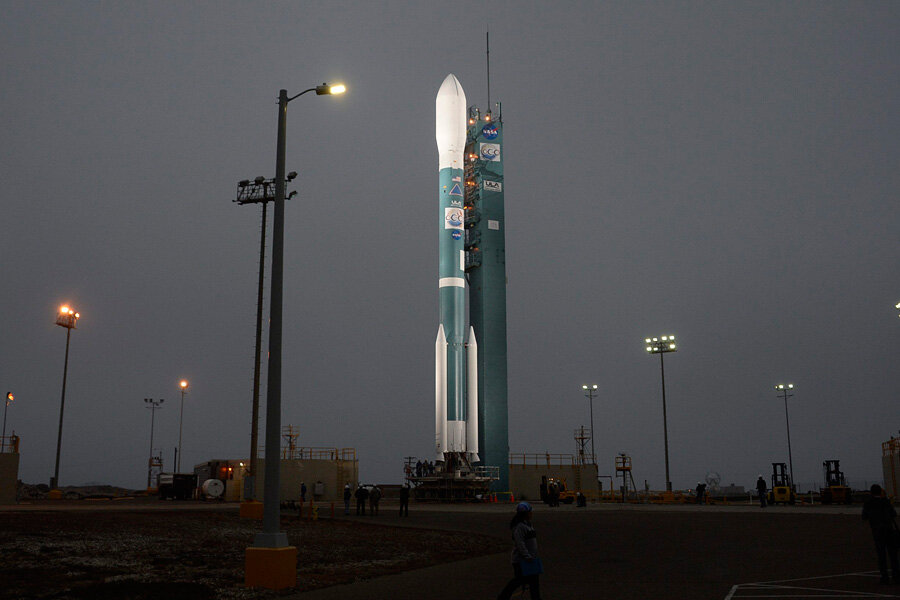Why did NASA scrub the launch of a carbon monitoring satellite?
Loading...
A rocket that was set to loft an Earth-gazing satellite to space did not get off its launch pad in California today (July 1) due to a problem with the pad's water system.
The problem arose less than a minute before the liftoff was expected. Because the launch window was only 30 seconds, mission controllers did not have time to analyze the issue and get the United Launch Alliance Delta 2 rocket carrying the Orbiting Carbon Observatory-2 (OCO-2) spacecraft back on track for launch this morning.
"It's a bit of a disappointment for the launch team when you have a great countdown up to that point," Tim Dunn, NASA launch controller said during the NASA TV broadcast. "However, these are things that we prepare for. We're a professional team. We know how to handle this."
Mission controllers won't know exactly what happened with the water system until they are able to safely get out to the launch pad at Vandenberg Air Force Base in California later today, Dunn added. It's still possible that the team will be able to attempt the launch again as early as Wednesday (July 2).
The water flow system on the launch pad that appears to have malfunctioned, causing the scrub, protects the launch mount from the high temperatures produced as the rocket fires, Dunn said. It also provides some suppression from the shock wave created during ignition, he added.
The $465 million OCO-2 mission is designed to be NASA's first satellite devoted to monitoring Earth's atmospheric carbon dioxide. Once in space, the craft will take measurements of the planet's carbon dioxide 24 times each second. The frequent measurements will help scientists on the ground see where the heat-trapping gas is being produced and even trapped.
The OCO-2 mission marks NASA's second attempt to measure atmospheric carbon dioxide from space. The original OCO satellite fell into the Pacific Ocean shortly after its failed launch atop an Orbital Sciences Taurus XL rocket in 2009. The nose cone of the rocket didn't open properly, causing the crash.
Visit Space.com's partner Spaceflight Now for an up-to-the-minute account of today's scrub via the website's Mission Status Center.
Follow Miriam Kramer @mirikramer and Google+. Follow us @Spacedotcom, Facebook and Google+. Original article on Space.com.
- Earth Quiz: Do You Really Know Your Planet?
- Will Orbiting Carbon Observatory Magnify Energy Industry’s PR Problem? | Video
- NASA Launching Five Missions Devoted To Earth Science In 2014 | Video
Copyright 2014 SPACE.com, a TechMediaNetwork company. All rights reserved. This material may not be published, broadcast, rewritten or redistributed.







